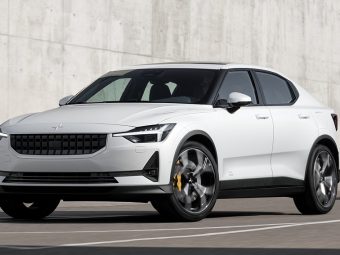The most basic factor of auto finance is the method of financing. If you look in to the methods deeply you will see that there are a few significant steps followed in auto financing by the lenders. Understanding these methods is typically helpful for all consumers as they can make a better and more affordable choice. In the end, nobody wants to find them lost in a debt trap.
- You can make your purchase from a car dealer by arranging and asking the dealer himself for a credit. The dealer in turn will follow normally sell your contract to a creditagency that it may be working with. That means the credit agency actually collects the indebtedness. This method of financing is called ‘sales’ or‘indirect’ financing.
- On the other hand you can place yourself as a borrower of credit to a bank or any other credit agency such as Liberty Lending with your intent to buy a car on loan. They will service you the credit contract but will pay the amount to the dealer or manufacturer of the car. This method is called ‘direct financing.’
In indirect financing, the finance transaction made for the sales of the car is typically beyond the periphery of the common usury laws. Why? This is because:
- This type of financing involves a joint sale of service in the form of a loan as well as the good in the form of a car.
- This means that according to the time-price doctrine, the credit is considered to be an addition to the cash price of the sale on the creditand not on the money given as a loan.
Moreover, the reselling of the loan contract to a separate credit agency by the car dealer is also considered as a separate transaction.
The intricacies of The Law
Different states started to formulate and implement special laws to govern retail installments since 1935 and it includes automobile installment financing of today.
According to the law, the dealer has no further contact or responsibility with the customer once the credit agency purchases the credit contract and receives the future payments from the consumer.
However, few dealers may accept a limited liability for customer satisfaction even for the loan product, but then that is a rarity.
- In such cases this event, the dealer usually repurchases thenote in case the credit agency returns the particular vehicle after repossessing due to defaults.
- It is also possible that the credit agency holds a certain amount as a reserve fund which the dealer may lose in case of repossession of the vehicle.
In such cases, this becomes the contingent liability for the dealer. When it comes to contingent liability of the dealer, in general there are many different types of arrangements. Liability according to the type of the customer credit contracts can be typically categorized into three major groups such as:
- Full recourse
- Limited recourse and
- Non-recourse category agreements.
Just as the name of these different categories imply, dealer liability may vary from full endorsement to no endorsement irrespective of the obligation of the customeras defined in the loan contract. However, in the latter case, the car dealer may sustain some liability being the seller of the creditcontract in spite of its lack of endorsement.
The Rate Factor
In indirect financing the rate plays a very significant role. This is actually the amount by which the credit discounts the loan contract while purchasing it from the car dealer. This rate is usually much lower than the rate of interest charged by the car dealer from the buyer of the car. The difference in these two rates typically accrues to the car dealer, which is also called the dealer share of the finance rate.
- The range of this difference in rate of interest is influenced by several different factors. It depends on different competitive forces as wellas on the extent of liability of the car dealer for the actual borrowers.
- On any given auto finance market, this dealer share of the finance rate is greater onrecourse contracts as compared to the non-recourse contracts that are purchased by the credit agency.
- Moreover, the size of the dealer share of the financerate is also influenced by the degree of risk taken by the dealer.
The fact that the car dealer receives a share from the non-recourse contracts indicates that thepayment echoes services other than the contingent liability. This is because the dealer combines the cost of acquiring automobile customers with the credit customers. Therefore, it is quite natural that a considerable portion of the dealer share of the finance rate will be ascribed by the strategic position of the dealer which is more of a middleman between the buyer of the car on loan and the indirect financing agencies.
The Competitive Market Forces
On the other hand, when you consider the competitive market forces you will see the need of the dealer to shift a part of the priceof the car to the finance charge. This is done to increase the number of credit sales.
In such cases the buyer is usually needed to insure the car against any physical damage for the entire life of the loan contract. In this matter, the dealer once again grabs the opportunity to actas an insurance agent for the insurance and sales finance companies. They may be fully owned insurance subsidiaries.
- When they act as a licensed agent, they receive quite a fair commission on the insurance premium for steering cases to a particular insurance company.
- When they do not act as a licensed agent, the dealer share of the finance rate will be typically higher when such insurance is bought from the subsidiary when compared with those insurance that are not sold along with the loan contract.
Alternatively, in such cases, it is the credit agency that typically acts as an agent for providing an independent insurance company to the buyer and in turn receives the insurance commissions.








